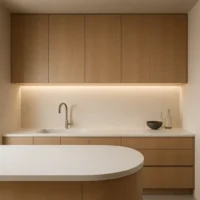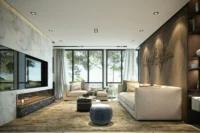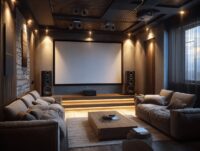- Home
- Articles
- Architectural Portfolio
- Architectral Presentation
- Inspirational Stories
- Architecture News
- Visualization
- BIM Industry
- Facade Design
- Parametric Design
- Career
- Landscape Architecture
- Construction
- Artificial Intelligence
- Sketching
- Design Softwares
- Diagrams
- Writing
- Architectural Tips
- Sustainability
- Courses
- Concept
- Technology
- History & Heritage
- Future of Architecture
- Guides & How-To
- Projects
- Interior Design
- Competitions
- Jobs
- Store
- Tools
- More
- Home
- Articles
- Architectural Portfolio
- Architectral Presentation
- Inspirational Stories
- Architecture News
- Visualization
- BIM Industry
- Facade Design
- Parametric Design
- Career
- Landscape Architecture
- Construction
- Artificial Intelligence
- Sketching
- Design Softwares
- Diagrams
- Writing
- Architectural Tips
- Sustainability
- Courses
- Concept
- Technology
- History & Heritage
- Future of Architecture
- Guides & How-To
- Projects
- Interior Design
- Competitions
- Jobs
- Store
- Tools
- More
Unlocking the Importance of Furniture Design in Interior Design for Stunning Spaces
Discover the transformative power of furniture design in interior spaces. This article explores how well-selected pieces not only enhance aesthetics but also improve functionality and emotional well-being. Delving into material choices, ergonomic comfort, and current design trends, it emphasizes the role of furniture in creating inviting, adaptable environments.

When we think about interior design, furniture often takes center stage. It’s not just about filling a space; it’s about creating an atmosphere that reflects our style and enhances our daily lives. The right furniture design can transform a room, making it functional, inviting, and visually appealing.
Understanding the importance of furniture design helps us appreciate how it influences the overall aesthetic and functionality of our spaces. From selecting the perfect materials to ensuring ergonomic comfort, every detail plays a crucial role. By focusing on furniture design, we can elevate our interiors and create harmonious environments that cater to our needs and tastes.

Table of Contents
ToggleThe Importance of Furniture Design in Interior Design
Furniture design plays a crucial role in interior design, influencing both function and aesthetics. Thoughtfully selected pieces enhance the ambiance and reflect our unique style. High-quality furniture often incorporates ergonomic features, leading to improved comfort during daily activities.

Key Aspects of Furniture Design
-
Material Selection
Material selection significantly affects durability, maintenance, and overall aesthetic appeal. We choose materials based on their suitability for specific environments. Utilizing wood, metal, or fabric impacts both the look and functionality of our interiors.
-
Functionality
Furniture design determines how we utilize spaces. Multi-functional pieces, such as sofa beds or extendable dining tables, maximize space efficiency. We incorporate furniture that adapts to our lifestyle, promoting versatility in our home environments.
-
Scale and Proportion
Scale and proportion influence visual balance within a room. Oversized furniture in small areas or tiny pieces in vast spaces disrupts harmony. We ensure our furniture matches the dimensions of the room to create a cohesive and inviting atmosphere.
-
Style and Aesthetics
Style drives the personality of interior design. Whether we favor minimalist, traditional, or eclectic styles, furniture design shapes our visual narrative. We choose furniture that enhances the overall theme, reinforcing our design intentions.
-
Comfort and Ergonomics
Comfort remains paramount in furniture design. Prioritizing ergonomic considerations encourages ease of use for all. Well-designed furniture fosters relaxation and well-being, dramatically impacting our daily experiences.
-
Color and Texture
Color and texture add depth and interest to our spaces. Strategic color pairings and varied textures create visual excitement. We explore different fabrics and finishes to enhance the richness of our interiors.
By prioritizing these aspects of furniture design, we create spaces that resonate with our personal style and cater to our everyday needs. Thoughtful furniture choices elevate the functionality and visual appeal of our interiors, enhancing our overall living experience.
Key Elements of Furniture Design
Furniture design significantly influences interior design through carefully curated elements that enhance both function and form. Understanding these components allows us to create spaces that are not only beautiful but also efficient.

Functionality
Functionality is essential in furniture design, as it determines how effectively spaces serve our daily activities. Multi-functional pieces, like sofa beds and storage ottomans, maximize space efficiency while providing versatility. Modular furniture adapts to various layouts, allowing us to configure our surroundings based on our needs. Quality construction materials, such as engineered wood or metal, enhance durability, ensuring that our functional furniture withstands daily use. Ultimately, prioritizing functionality leads to environments that support our lifestyles and facilitate seamless interactions.
Aesthetics
Aesthetics play a crucial role in shaping the visual appeal of a space. The selection of style, color, and texture creates a cohesive design narrative. Designer furniture pieces can act as focal points, drawing attention and sparking conversation. We emphasize the importance of proportion and scale to create a balanced look within a room, avoiding overcrowding. Additionally, incorporating various materials—like natural wood, sleek glass, or soft upholstery—adds depth and interest. Thoughtful aesthetic choices resonate with our personal style, transforming our spaces into reflections of who we are.
Impact on Space Utilization
Furniture design significantly impacts how we utilize our living spaces. Thoughtfully designed furniture enables efficient layouts, ensuring we make the most of every square foot.

Maximizing Space
Furniture arrangements play a crucial role in maximizing space. When we choose multi-functional pieces, such as sofas with built-in storage or extendable dining tables, we enhance usability. Modular furniture adapts to different configurations, making it easier to reorganize as our needs change. Utilizing vertical space with tall shelving units or wall-mounted desks also optimizes floor area while maintaining accessibility.
Creating Flow
Creating visual and physical flow relies heavily on furniture design. Balanced proportions and consistent styles generate a seamless transition between areas. Placing furniture to encourage movement fosters easy navigation throughout the space. Open layouts benefit from strategic placement of pieces, reducing clutter and enhancing connection. Thoughtful groupings of furniture contribute to an inviting atmosphere, promoting interaction and comfort in our interiors.
Emotional and Psychological Effects
Furniture design significantly impacts our emotions and psychological well-being within a space. Thoughtfully designed furniture enhances mood and fosters a sense of belonging.

Mood Enhancement
Mood enhancement occurs through color, shape, and arrangement of furniture. Warm colors often evoke feelings of comfort and coziness, while cooler tones can create a calm and tranquil atmosphere. For example, plush sofas and soft textures encourage relaxation. Additionally, furniture layout influences social interactions; an open arrangement promotes communication, while a more closed setting can foster intimacy. Strategic use of furniture can cultivate positive emotional responses, making our environments feel uplifting and welcoming.
Personal Identity
Personal identity reflects through furniture choices, showcasing individual style and preferences. Unique pieces, such as statement chairs or handcrafted dining tables, tell a story about who we are. Our selections help create spaces that resonate with our values and experiences. For instance, eco-friendly furniture aligns with sustainability goals, while antique pieces might express a love for history. The curated environment allows us to express authenticity, making our living spaces extensions of ourselves and enhancing our connection to those spaces.
Trends in Furniture Design
Current trends in furniture design focus on sustainability and multifunctionality. Both aspects enhance the value of interior spaces while aligning with contemporary lifestyles.

Sustainable Design
Sustainable design emphasizes eco-friendly materials and practices. Choosing furniture made from reclaimed wood, bamboo, or recycled materials supports environmental preservation. Brands increasingly promote transparent sourcing and ethical manufacturing processes, ensuring minimal ecological impact. Additionally, timeless designs reduce the need for frequent replacements, promoting longevity and sustainability. We can integrate greenery into our indoor spaces with furniture that incorporates biophilic elements, enhancing both aesthetics and air quality.
Multifunctional Furniture
Multifunctional furniture maximizes space efficiency and adapts to diverse needs. Pieces like sofa beds, extendable dining tables, and storage ottomans cater to compact living. Such designs enhance usability, allowing us to utilize small areas effectively. Modular furniture systems make it easy to reconfigure layouts, accommodating changing lifestyles. This trend encourages ingenuity in creating versatile interiors that evolve with us, reflecting our dynamic daily activities and improving overall functionality.
Conclusion
Furniture design plays a vital role in interior design, impacting functionality, visual appeal, and emotional well-being. Prioritizing material selection ensures durability and aesthetic coherence, while well-designed furniture enhances space utilization and supports everyday activities. By integrating multi-functional and modular pieces, we maximize efficiency and adaptability, catering to varied needs in our living environments.
Effective furniture arrangements create visual flow, promoting ease of navigation and fostering interaction among occupants. Thoughtful combinations of size, scale, and proportion prevent overcrowding, enhancing the overall atmosphere. The emotional effects of well-chosen elements contribute to a sense of belonging and comfort, allowing personal identity to shine through our selections.
Current trends underscore the importance of sustainability and multifunctionality, reflecting our evolving lifestyles. By embracing eco-friendly materials and timeless designs, we not only support environmental preservation but also invest in long-lasting pieces that resonate with our values. Overall, focusing on furniture design enriches our interior spaces, transforming them into functional, stylish, and emotionally resonant environments.
- bespoke furniture
- contemporary furniture design
- custom furniture design
- decorating ideas
- designer furniture pieces
- Elegant interior design
- Furniture Design
- furniture for small spaces
- furniture trends
- Home Decor
- home interior design ideas
- innovative furniture solutions
- interior design
- interior design aesthetics
- Interior Design Tips
- Interior Styling
- luxury furniture
- modern furniture
- space optimization furniture
- stunning interior spaces
Submit your architectural projects
Follow these steps for submission your project. Submission FormLatest Posts
Transform Your Home: Lampshades to Elevate Your Lighting Scheme with Style
Transform your home's ambiance with stylish lampshades! Discover how the right shapes,...
Top Bathroom Cabinet Design Tips to Enhance Style and Functionality
Discover expert bathroom cabinet design tips to elevate both style and functionality...
Custom Furniture That Fits Your Interior Design Plan
Walk into a studio where the desk, shelving, and lighting line up...
Best Bedroom Furniture Ideas for a Stylish and Functional Space
Transform your bedroom into a serene sanctuary with the best furniture ideas!...












Leave a comment